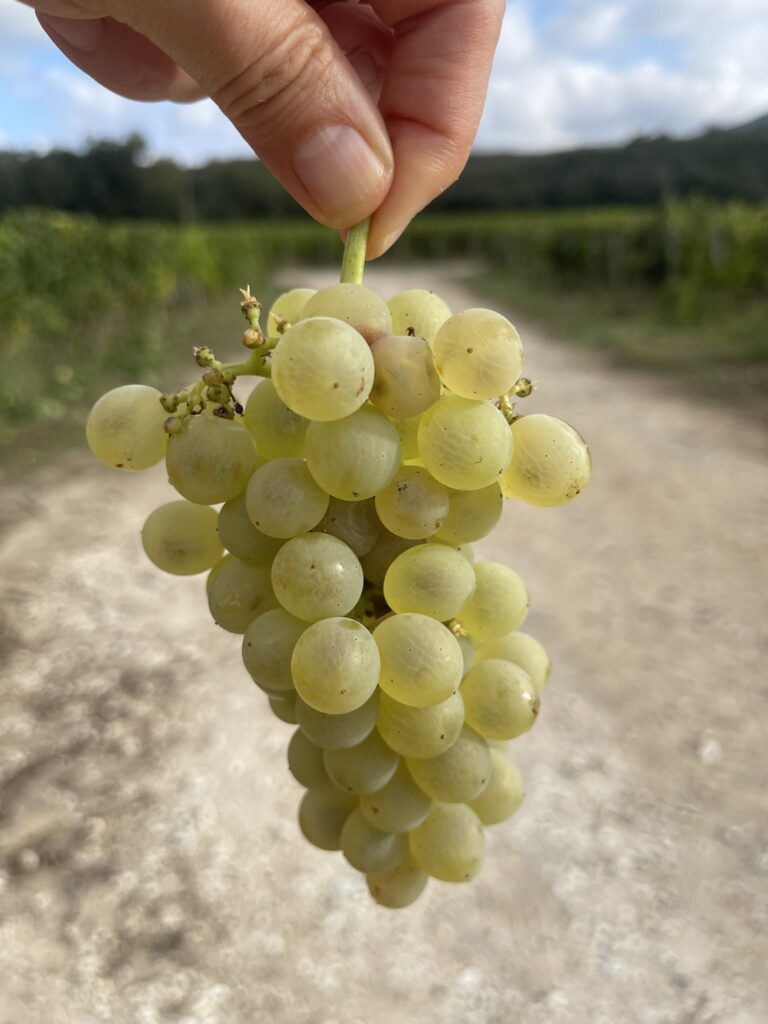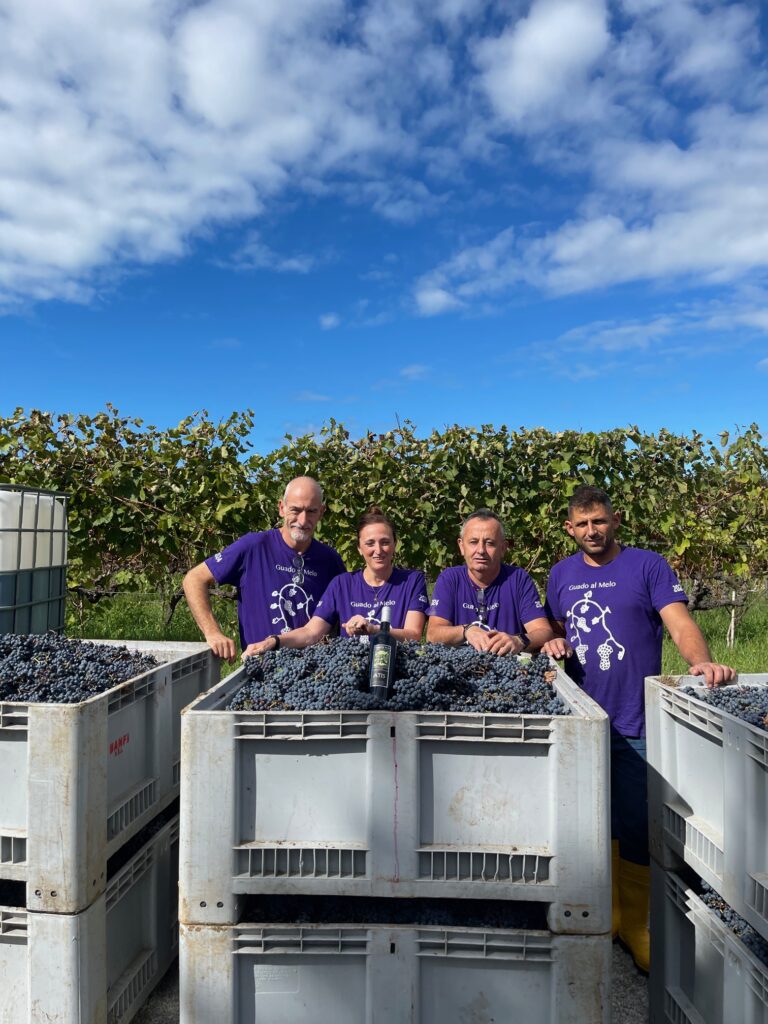We can say in general that for us 2024 was a very good year for wine. We can now take a fuller look at it, as the wines have now all been racked off and put into barrels for the aging period (the reds). The whites, on the other hand, are continuing their stay on the lees in steel tanks.
This thought has consoled us from the dramatic incident that instead occurred in our vineyards on September 23. Many of you will already know what happened from our social media. For those of you who were unaware, I remember that on September 23 there was an afternoon of very heavy rain, indeed I would say torrential. More than 200 mm fell in a few hours (a little more than 600 mm falls in our territory all year round). The nearby creek overflowed and debris invaded some vineyard plots.
Instead, let us return to the harvest that just ended, which is the subject of this article. As mentioned, the 2024 vintage was very good, if not excellent, with the typical characteristics of not-too-hot vintages in our area. These are special vintages, which combine the usual complexity with a greater gracefulness, thanks to less intense alcohol degrees, so they increase even more their elegance and smoothness.
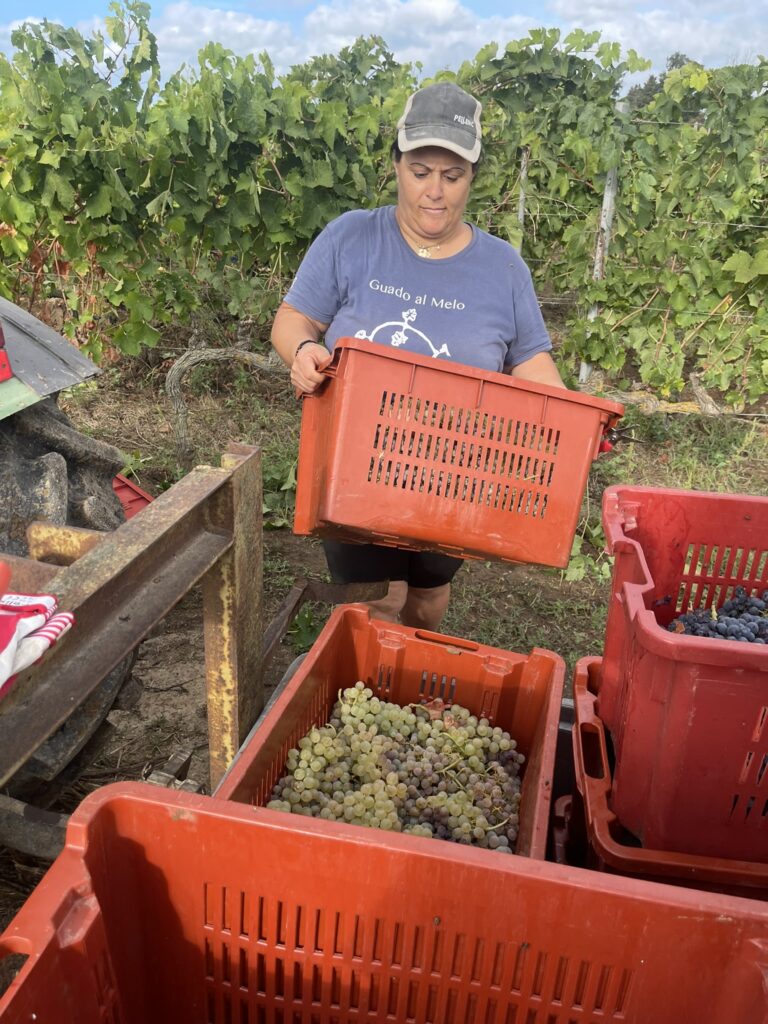
Winter was regular, apart from a few unusually cold days for the Tuscan coast. Spring began with a warm moment, but then continued cooler and rainier than normal. This anomalous weather lasted until almost the end of June, but without too intense events.
What were the consequences? From a technical point of view, we had to work to prevent the development of the downy mildew, a vineyard disease that rarely happens in our area because of our Mediterranean climate. However, we managed it without too many problems, thanks to Michele’s great experience and our sustainable systems of integrated viticulture.
The second and most interesting aspect is that the spring rain made a great contribution to the quality and characteristics of the vintage. It provided optimal water availability for the vines to cope with our Mediterranean summer. Indeed, at the end of June began the usual hot, dry and windy season with intense brightness that characterizes our coast in the summer months. It has not been too oppressively hot, apart from a few intense peaks in August. Nevertheless, the vines showed great lushness and much buoyancy, thanks precisely to the abundance of water in the underground aquifers. The good weather then continued into September, interspersed with occasional single rainfalls. The good thing about our area is that the rains of this period are always followed by sunny and windy days that dry out and prevent the persistence of moisture, so damaging to the grapes.
We started the harvest at the usual time of the last few years, on September 9, with a few parcels of Syrah from the Campo Ferro vineyard. On the 10th and 11th we harvested the Vermentino, and on September 13 the Campo Bianco vineyard (of Criseo). After that we went into full swing into the harvest succession of the different red varieties: Syrah, Sangiovese, the Campo Giardino vineyard plots of Jassarte, Rebo, Cabernet franc and sauvignon, …
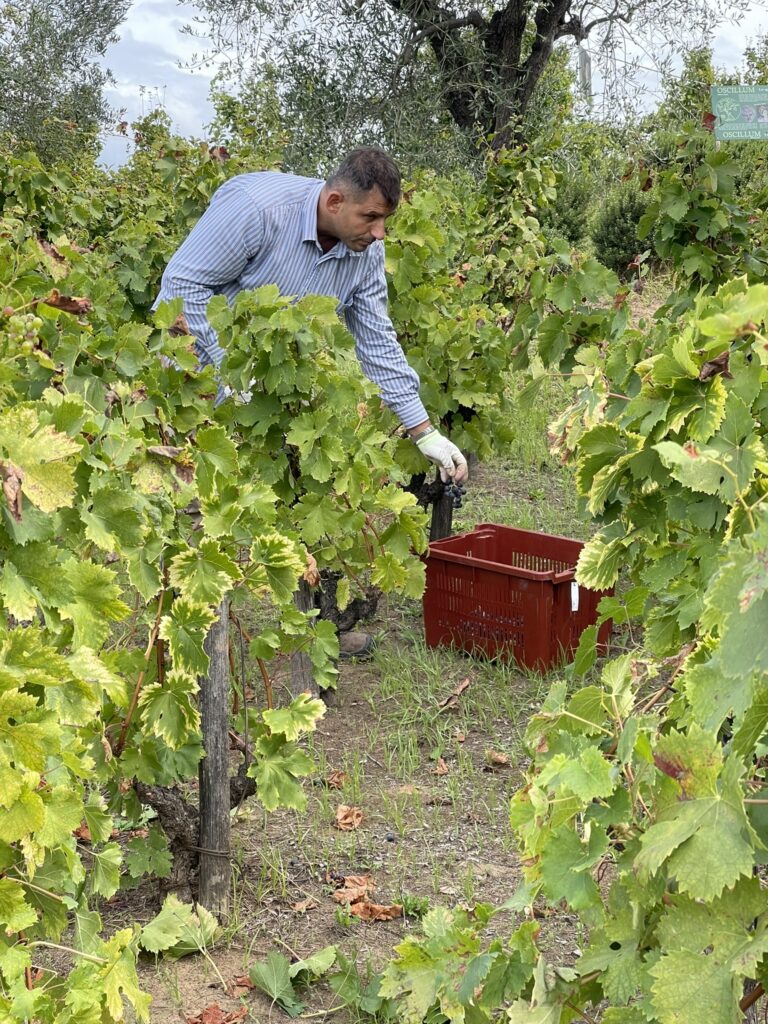
On September 23, there was the episode of the creek flooding. I speak of episode because already the next day the sky was clear and bright. The water was all gone, absorbed by the soils (which are very draining) or poured into the sea. The affected particles had fortunately already been almost all collected. Only parts of the Campo Grande vineyard had grapes still on the vine. These were part of our Cabernet sauvignon (which is the later variety for us), which we had to abandon. The good weather that followed allowed us to finish harvesting in a few days in the last vineyards with this variety, those not affected by the flood. We thus concluded the first days of October.
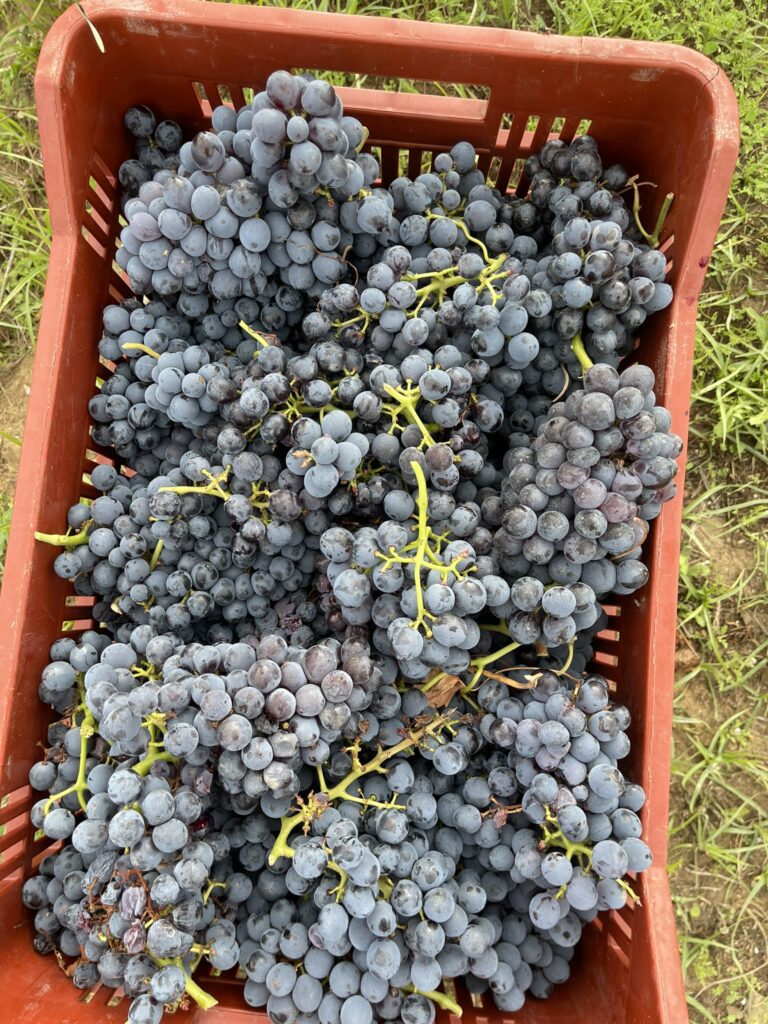
This year’s seasonal trend (like last year’s) could be seen as bucking the current climate change trend. In fact, the biggest concern for areas like ours, in central and southern Italy, is that vintages will be increasingly dry and with increasingly extreme heat. Indeed, average annual temperatures have risen somewhat, but in the past two years, rainfall has instead increased, especially in the spring. The problem is that these rains do not become disastrous, as was the case on September 23. Thunderstorms here can be more dangerous in the fall because of the accumulated heat from the sea that foments extreme events. These events are also a consequence of climate alteration in recent decades. However, so far this has been a single case. The last time it rained this much here, but without such major consequences, was in 1983.
In general, we can say without doubt that 2024 was in Bolgheri a vintage with good water availability for the vines. However, it was not as wet and damaging to the vines as 2014 or 2002. The vines simply had optimal luxuriance, with very good production yields, even a bit higher than previous vintages. There were no few phytosanitary problems on the bunches in September, thanks to the windy weather and bright sunshine. The harvested grapes were healthy, very fragrant, with not too much sugar content. The 2024 wines will therefore be characterized by somewhat lower alcohol degrees than in recent years, in favor of finesse and pleasantness.
